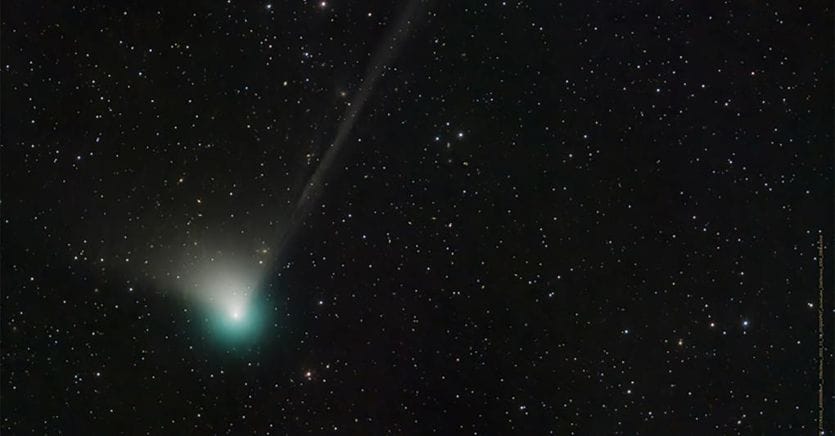Comet C/2022 E2 ZTF is preparing to visit the Sun: on Thursday 12 January it will reach perihelion, i.e. the point of minimum distance, equal to 166 million kilometres. The nucleus of the comet – which will return to visit the Earth after its last passage occurred in the time of the Neanderthals, about 52,000 years ago – should survive the close encounter with the star without disintegrating, to then make its way towards the Earth which will greet the next February 1st, probably making itself visible to the naked eye. The experts of the National Institute of Astrophysics explain it on MediaInaf.
On Thursday 12 January comet Ztf will pass at “a fairly high distance” from the Sun, “therefore the nucleus should survive the sublimation activity without problems and not disintegrate as has happened to other comets that have come much closer, for example the Ison (C/2012 S1) in 2013. From 17 January 2023 – the experts continue – the declination of the Ztf will be so high that it will become circumpolar for the Italian latitudes, therefore it will always be visible in the sky during the night and will remain so until 5 February ”.
Currently the comet shows itself to the telescopes with a green coma, an intense yellowish dust tail and a thin bluish ion tail. The latest observations indicate that the comet’s brightness is increasing as expected and that the comet will be above the threshold of naked-eye visibility between January 20 and February 10, with maximum brightness on February 1 coinciding with its closest distance from Earth.
You only need binoculars to observe it
To admire the show it will be useful to have “at least a small 8ž30 or 10ž50 binoculars, the typical ones for naturalistic excursions”, say the experts, preferably away from the city lights and the disturbance of the Moon. To reveal the tricks for a correct observation is the astrophysicist Gianluca Masi, head of the Virtual Telescope Project, who will organize two observing sessions on 13 January and 2 February. “The comet is expected to just pass the threshold of unaided eye visibility when it is closest to Earth (about 42.5 million km) on February 1 at 6:11 p.m., making it barely observable without instruments under truly dark, clear and starry”, explains Masi. “This means that it will certainly not be as spectacular as the C/2020 F3 Neowise of summer 2020 and therefore will require at least binoculars to be appreciated”. On the other hand, at Italian latitudes, in the days of maximum splendor between the end of January and the beginning of February, the comet, as mentioned, will be circumpolar, i.e. visible all night above the horizon. The real limit is represented by the interference of the Moon, which will be particularly intrusive in the key evenings.
February 1 at its peak
“Between 15 and 25 January – specifies Masi – the best visibility conditions will be in the second part of the night, given that C/2022 E3 will still be too low in the early evening, passing between the stars of Bootes and Draco. In the last days of January, the evening visibility of the comet will be better (between the stars of Ursa Minor and Camelopardalis), but the Moon (in the first quarter on January 28) will interfere in crescendo: in the second part of the night, our satellite will set, freeing ourselves from its intrusive light”. On February 1st, having reached the minimum distance from the Earth, C/2022 E3 will be at its maximum splendor (roughly visible as the Andromeda galaxy to the naked eye), but it will coexist with an important Moon, which will set only in the last part of the night . Gradually, the Moon (full on February 7) will move in the second part of the night, leaving the comet free in the evening, which in those days will pass very high in the sky, now gradually weakening between the stars of Auriga and Toro. Finally, on February 11, the comet will pass just over a degree from the much brighter Mars.
